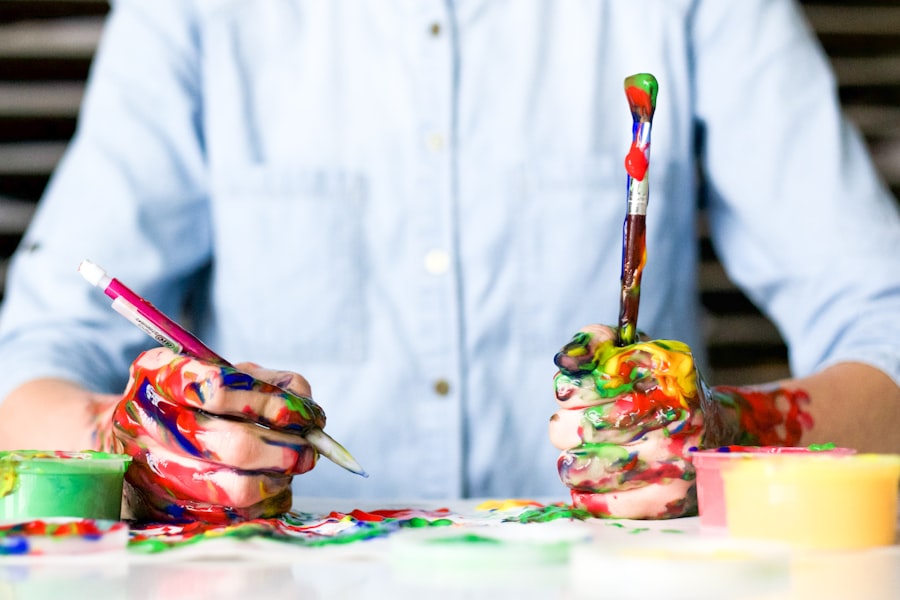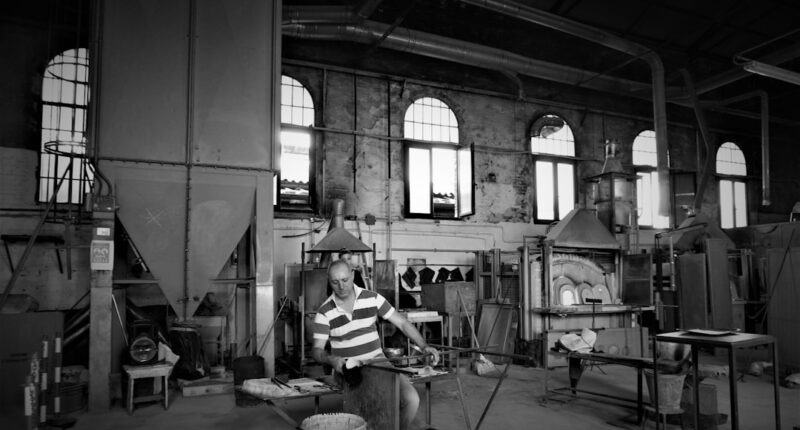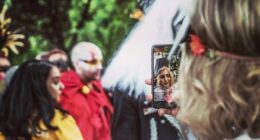In the contemporary landscape of art and music, authenticity has emerged as a cornerstone of effective marketing strategies for artists. Audiences today are increasingly discerning; they seek genuine connections with the creators behind the work they admire. This desire for authenticity is not merely a trend but a fundamental shift in how art is consumed and appreciated.
When artists present themselves authentically, they foster trust and loyalty among their audience, which can translate into a more dedicated fan base. For instance, musicians who share personal stories or struggles through their lyrics often resonate more deeply with listeners, creating a bond that goes beyond mere entertainment. Moreover, authenticity allows artists to differentiate themselves in a saturated market.
With countless individuals vying for attention, those who remain true to their unique voice and vision stand out. This differentiation is crucial in an age where social media platforms are flooded with content. An artist who embraces their individuality and shares their creative journey—complete with its ups and downs—can cultivate a distinctive identity that attracts followers.
For example, visual artists who document their creative process on platforms like Instagram not only showcase their work but also invite audiences into their world, making them feel part of the artistic journey.
Key Takeaways
- Authenticity is crucial in artist marketing as it helps build trust and connection with the audience.
- Building a strong personal brand as an artist involves defining your unique identity and consistently communicating it across all platforms.
- Social media and online platforms are powerful tools for artist promotion, allowing for direct engagement with fans and reaching a wider audience.
- Compelling visual and written content is essential for artist marketing, as it helps to tell a story and create a strong emotional connection with the audience.
- Developing strategic partnerships and collaborations can expand an artist’s reach and provide opportunities for cross-promotion and exposure.
Building a Strong Personal Brand as an Artist
Establishing a Strong Foundation
Creating a robust personal brand is essential for artists looking to establish themselves in the competitive art scene. A personal brand encapsulates an artist’s identity, values, and the message they wish to convey through their work. It is not merely about logos or catchy taglines; it encompasses the entire experience that an audience has with the artist.
Defining Your Unique Identity
To build a strong personal brand, artists must first identify their core values and what sets them apart from others in their field. This could be a unique artistic style, a specific theme that recurs in their work, or even a particular philosophy that guides their creative process. Once an artist has defined their brand, consistency becomes key.
Consistency and Cohesion
This consistency should permeate all aspects of their public persona, from the visual aesthetics of their artwork to the tone of their communications on social media. For instance, an artist who focuses on environmental themes might choose to use earthy tones in their artwork and share content related to sustainability on their social media platforms. This cohesive approach not only reinforces their brand identity but also attracts like-minded individuals who resonate with their message.
Storytelling and Connection
Additionally, artists can leverage storytelling to enhance their brand; sharing anecdotes about their creative process or the inspiration behind specific pieces can create a deeper connection with their audience.
Leveraging Social Media and Online Platforms for Artist Promotion

In today’s digital age, social media and online platforms have revolutionized how artists promote themselves and connect with audiences. These platforms provide unprecedented access to global audiences, allowing artists to showcase their work without the need for traditional gatekeepers like galleries or record labels. For instance, platforms such as Instagram and TikTok have become vital tools for visual artists and musicians alike, enabling them to share snippets of their work, engage with fans, and even sell directly to consumers.
The immediacy of these platforms allows for real-time interaction, fostering a sense of community among followers. Moreover, social media offers artists the opportunity to experiment with different forms of content to see what resonates best with their audience. For example, an artist might post time-lapse videos of their painting process or share behind-the-scenes glimpses of their studio setup.
These engaging formats not only captivate viewers but also encourage them to share the content within their networks, amplifying the artist’s reach. Additionally, utilizing hashtags strategically can help artists tap into broader conversations and trends within the art community, further enhancing visibility.
Creating Compelling Visual and Written Content for Artist Marketing
The creation of compelling visual and written content is paramount in artist marketing. Visual content serves as the primary medium through which artists communicate their vision and style; it is often the first impression potential fans will have of an artist’s work. High-quality images or videos that showcase an artist’s creations can significantly impact how they are perceived.
For instance, a photographer might curate a visually striking portfolio that highlights not only their best work but also reflects a cohesive aesthetic that aligns with their brand identity. Written content also plays a crucial role in artist marketing. Artists can use blogs, newsletters, or social media captions to articulate their thoughts on art, share insights into their creative process, or discuss the themes present in their work.
This written narrative adds depth to the visual experience and allows audiences to engage with the artist on a more intellectual level. For example, an artist might write about the societal issues that inspire their work, inviting viewers to consider the broader context behind each piece. By combining compelling visuals with thoughtful written content, artists can create a rich tapestry that captivates and informs their audience.
Developing Strategic Partnerships and Collaborations for Artist Promotion
Strategic partnerships and collaborations can significantly enhance an artist’s visibility and reach within the art community. By aligning with other creatives or brands that share similar values or aesthetics, artists can tap into new audiences and create synergistic opportunities for promotion. For instance, a painter might collaborate with a fashion designer to create a limited-edition clothing line featuring prints of their artwork.
This partnership not only introduces the painter’s work to fashion enthusiasts but also enriches the designer’s collection with unique artistic elements. Additionally, collaborating with other artists can lead to innovative projects that push creative boundaries. Joint exhibitions or performances can draw larger crowds and generate buzz within both artists’ communities.
For example, musicians might team up with visual artists for multimedia performances that combine live music with projected artwork, creating an immersive experience for audiences. Such collaborations not only enhance each artist’s portfolio but also foster a sense of camaraderie within the creative community.
Understanding the Power of Networking and Community Engagement for Artists

Networking is an invaluable tool for artists seeking to expand their influence and opportunities within the art world. Building relationships with fellow artists, curators, gallery owners, and industry professionals can open doors to exhibitions, collaborations, and other career advancements. Attending art fairs, workshops, and industry events provides artists with opportunities to connect face-to-face with key players in the field.
These interactions can lead to mentorship opportunities or introductions that may prove pivotal in an artist’s career trajectory. Community engagement is equally important for artists looking to establish themselves locally while also contributing positively to society. Participating in community art projects or workshops not only allows artists to showcase their skills but also fosters connections with local audiences who may become loyal supporters.
For instance, an artist who leads a mural project in a neighborhood can create lasting relationships with residents while beautifying public spaces. This engagement not only enhances the artist’s visibility but also reinforces their commitment to using art as a means of community building.
Utilizing Data and Analytics to Inform Artist Marketing Strategies
In an era where data drives decision-making across industries, artists can benefit significantly from utilizing analytics to inform their marketing strategies. By analyzing engagement metrics on social media platforms or website traffic data, artists can gain insights into what content resonates most with their audience. For example, if an artist notices that posts featuring behind-the-scenes content receive higher engagement than standard artwork showcases, they can adjust their content strategy accordingly.
Furthermore, understanding demographic data about followers can help artists tailor their messaging and outreach efforts more effectively. Knowing the age range, geographic location, and interests of an audience allows artists to create targeted campaigns that speak directly to those individuals’ preferences. For instance, if an artist discovers that a significant portion of their followers are young adults interested in sustainability, they might choose to highlight eco-friendly practices in their art-making process or collaborate with environmental organizations.
Nurturing and Maintaining Relationships with Fans and Supporters
The relationship between artists and their fans is one of mutual appreciation and support; thus, nurturing these connections is vital for long-term success. Engaging with fans through social media comments, direct messages, or live Q&A sessions fosters a sense of community and belonging among supporters. Artists who take the time to respond personally to comments or messages demonstrate that they value their audience’s input and presence in their artistic journey.
Additionally, maintaining relationships with fans can be enhanced through exclusive content or experiences. Offering behind-the-scenes access, early previews of new work, or special merchandise can make fans feel appreciated and invested in the artist’s success. For example, an artist might create a Patreon account where supporters can subscribe for exclusive content such as tutorials or personalized artwork requests.
This not only generates additional income but also deepens the connection between the artist and their most dedicated fans. In conclusion, authenticity in marketing is essential for artists navigating today’s complex landscape. By building strong personal brands, leveraging social media effectively, creating compelling content, developing strategic partnerships, engaging with communities, utilizing data analytics, and nurturing relationships with fans, artists can cultivate successful careers while remaining true to themselves and their artistic vision.
FAQs
What are some key insights from Derek Sivers on effective artist marketing?
Some key insights from Derek Sivers on effective artist marketing include the importance of focusing on the core fans, creating a personal connection with the audience, and leveraging the power of word-of-mouth marketing.
How can artists effectively market themselves according to Derek Sivers?
According to Derek Sivers, artists can effectively market themselves by focusing on building a strong connection with their core fans, creating remarkable experiences for their audience, and leveraging the power of word-of-mouth marketing.
What is the significance of focusing on core fans in artist marketing, as per Derek Sivers?
Derek Sivers emphasizes the significance of focusing on core fans in artist marketing because these fans are the most passionate and influential advocates for the artist. By nurturing and engaging with core fans, artists can benefit from word-of-mouth marketing and build a loyal fan base.
How does Derek Sivers suggest artists create a personal connection with their audience?
Derek Sivers suggests that artists can create a personal connection with their audience by being authentic, engaging with fans on a personal level, and sharing their journey and experiences with transparency.
What role does word-of-mouth marketing play in effective artist marketing, according to Derek Sivers?
Derek Sivers highlights the importance of word-of-mouth marketing in effective artist marketing, as it relies on the recommendations and endorsements of satisfied fans, which can significantly impact an artist’s success and reach.









